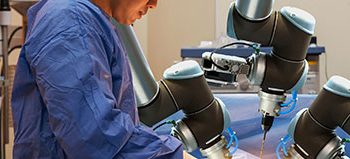
Market Overview & Forecast:
The ultrasound devices market is projected to reach USD 8.2 billion by 2025 from USD 6.1 billion in 2020, at a CAGR of 6.1% during the forecast period. The growth of this market is mainly driven by the increasing prevalence of target diseases, which have supported the demand for effective diagnostic procedures. Furthermore, the preference for minimally invasive procedures has risen due to their benefits over traditional surgeries. The availability of funds for research and product commercialization has allowed for technological advancements in ultrasound systems. Lastly, the potential end-user base has expanded—increasing numbers of diagnostic centers are being set up across the world to cater to the needs of a growing patient population.
Growth Driver: increasing prevalence of target diseases
The high and increasing incidence of target diseases and conditions will boost the adoption of effective diagnostic and therapeutic procedures. As ultrasound technologies are cost-effective, safer, and offer earlier diagnosis & treatment of target diseases, their demand in disease management is expected to increase during the forecast period. Important statistics related to other major target diseases have been mentioned below:
- According to the American Heart Association, by 2030, about 41.4% of US adults will have hypertension (an increase of 8.4% from 2012)
- The burden of cancer, for example, is expected to increase from 14.1 million new cases to 18.1 million new cases during 2012– 2018 (Source: GLOBOCAN, 2018).
- Globally, 415 million people had diabetes in 2015; by 2040, this figure will reach 642 million (Source: IDF Diabetes Atlas, 8th Edition). The number of diabetics in developing countries is expected to reach 228 million in 2025.
Europe is expected to command the largest share of the ultrasound market in 2019
The report covers the ultrasound market across five major geographies, namely, Europe, North America, Asia Pacific, Latin America and MEA. Europe is expected to command the largest share of the ultrasound market in 2019. Factors such as the large number of ongoing clinical research projects in the field of ultrasound, expansions in the clinical applications of focused ultrasound and the early commercialization of these devices in the region, and the significant healthcare expenditure across mature European countries (such as Germany, France, the UK, Italy, and Spain) are driving the growth of the ultrasound market in Europe.
Recent Developments
-In 2020, Hitachi launched ARIETTA 750, a new model in the ARIETTA diagnostic ultrasound series.
-In 2020, Philips received US FDA approval for its wide range of ultrasound solutions—such as EPIQ series, Affiniti series, Lumify, CX50, and Sparq diagnostic ultrasound systems— for the management of COVID-19-related lung and cardiac complications.
-In 2020, Mindray introduced the novel ME series of portable ultrasound systems to fight the COVID-19 pandemic. These systems feature smart fluid management solutions, comprehensive disinfection solutions, convenient and agile mobility, intuitive interface, and flexible battery solutions to help clinicians address diagnostic challenges and make rapid decisions. The ME series is available in Europe and selected countries.
Leading Key Players:
The analysis of market developments between 2017 and 2020 has revealed that several growth strategies, such as product launches, product approvals, acquisitions, partnerships, and agreements were adopted by market players to strengthen their product portfolios and maintain a competitive position in the ultrasound market. Product approvals and launches were the most widely adopted growth strategies by market players in the last three years to garner a larger share of the market. In 2019, the ultrasound market was dominated by GE Healthcare (US), Koninklijke Philips N.V. (Netherlands), Canon Medical Systems Corporation (Japan), Hitachi, Ltd. (Japan), and Siemens Healthineers AG (Germany).

